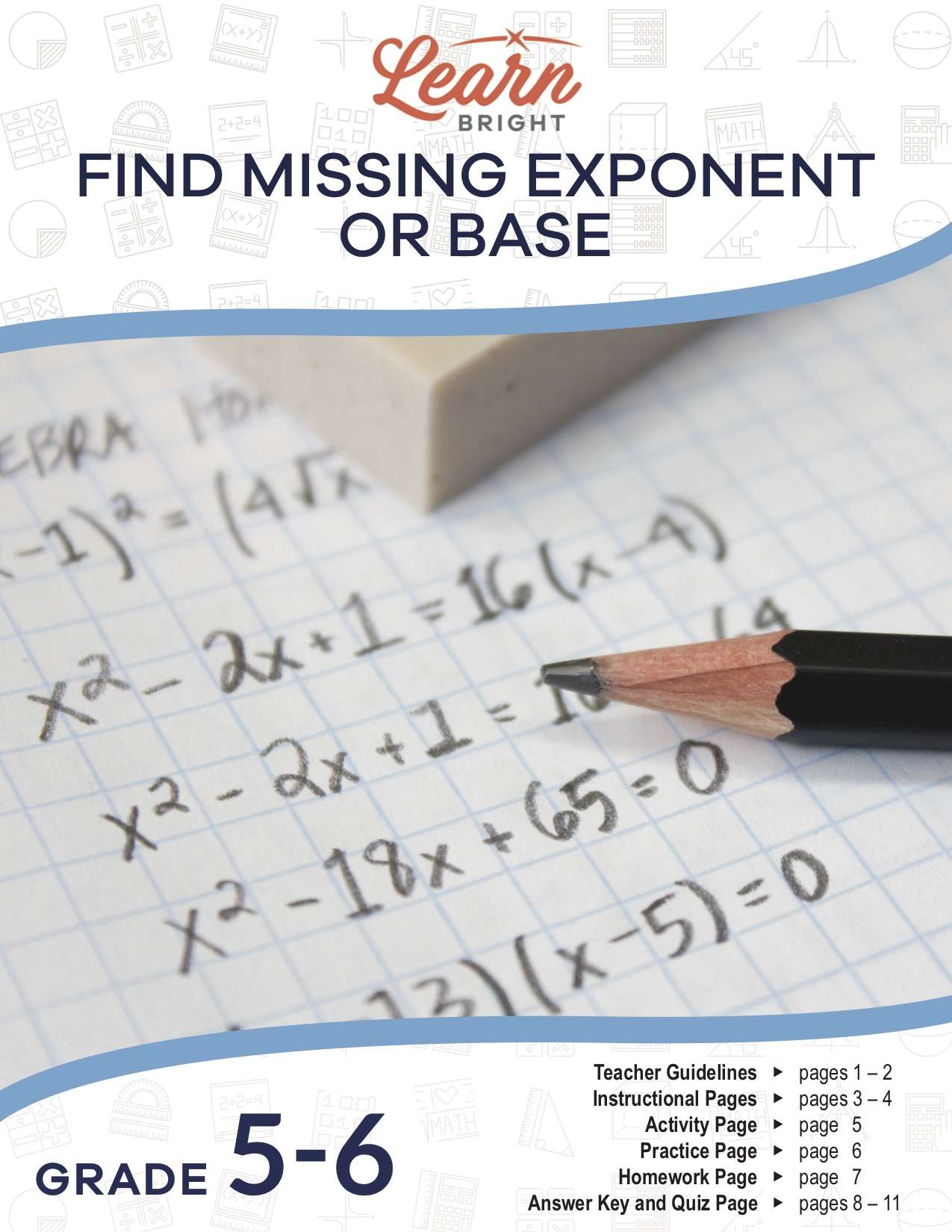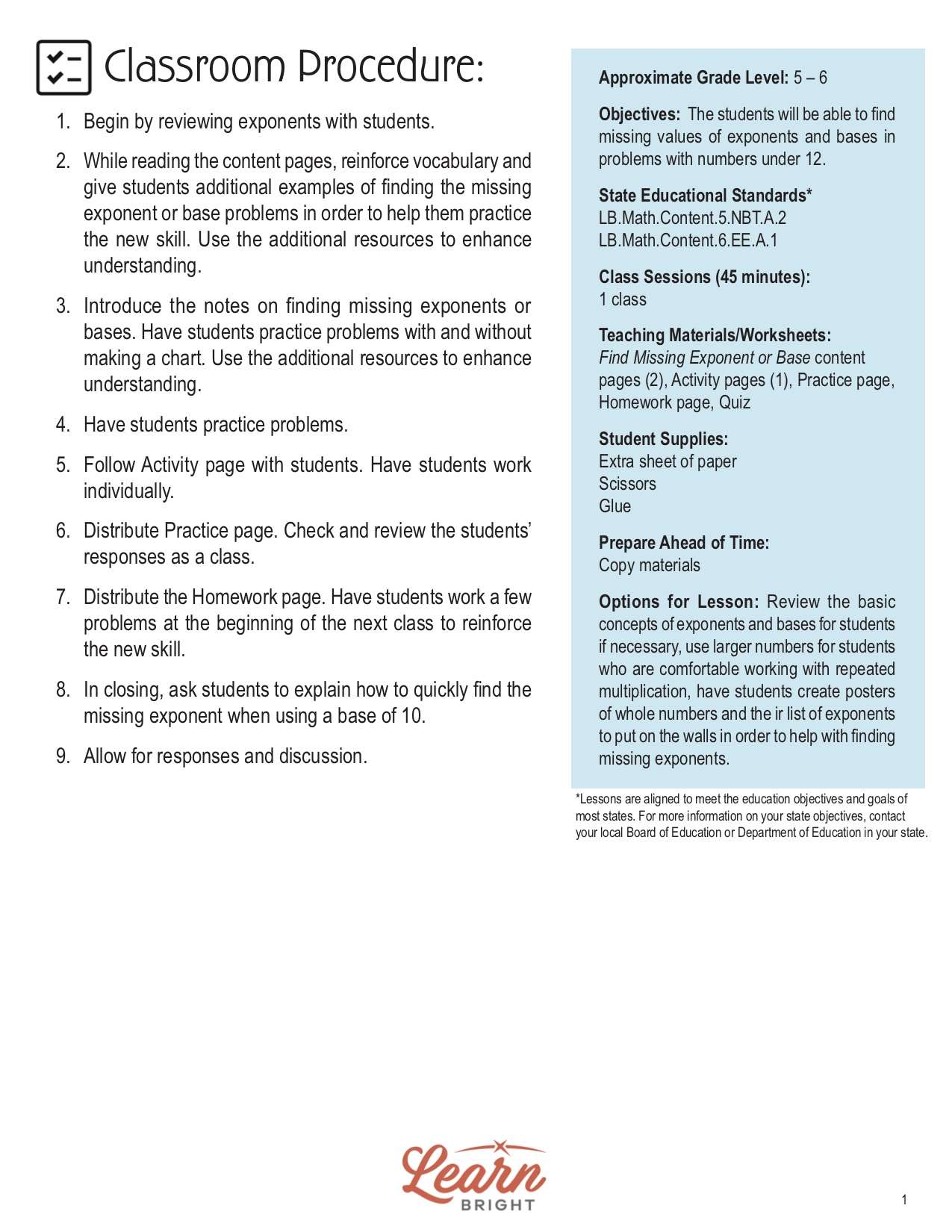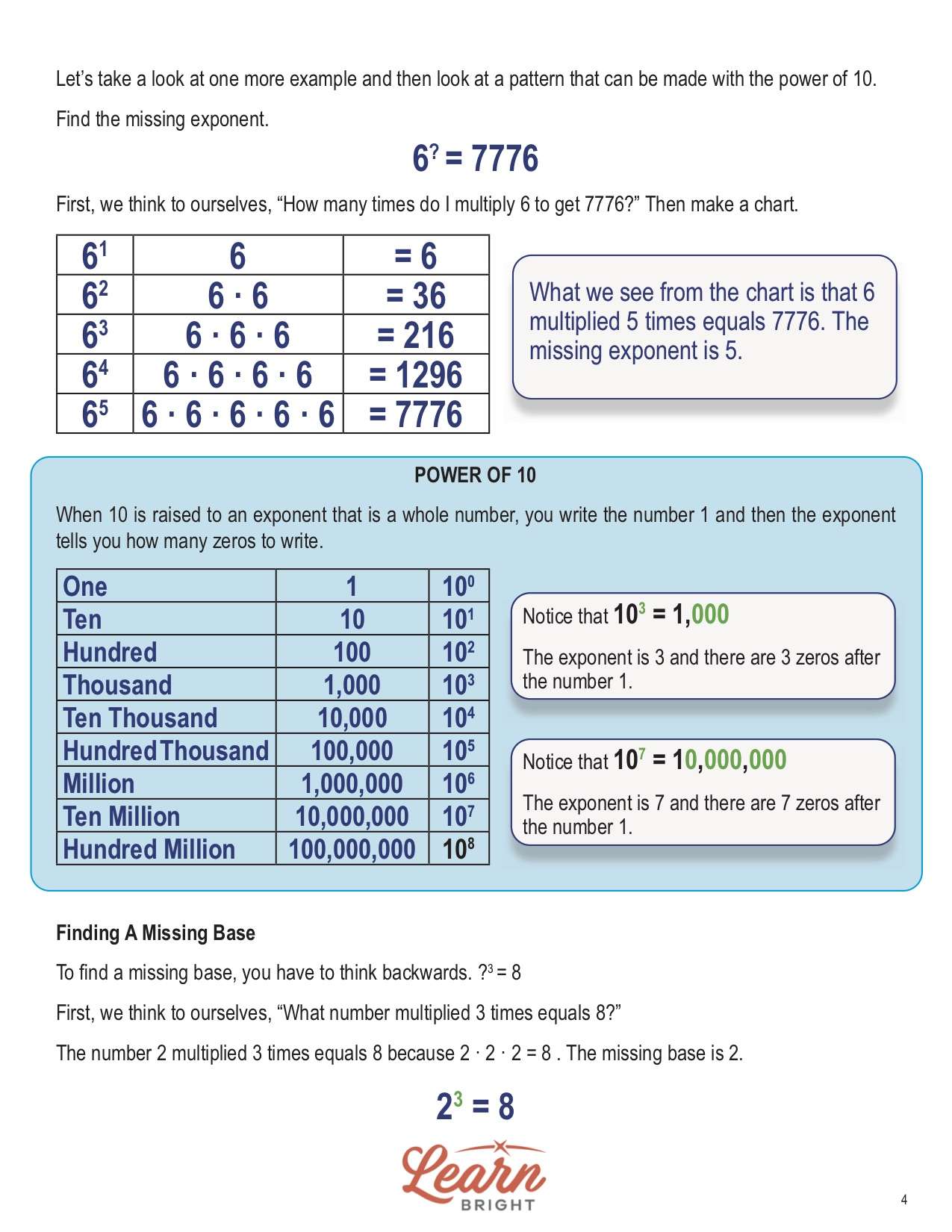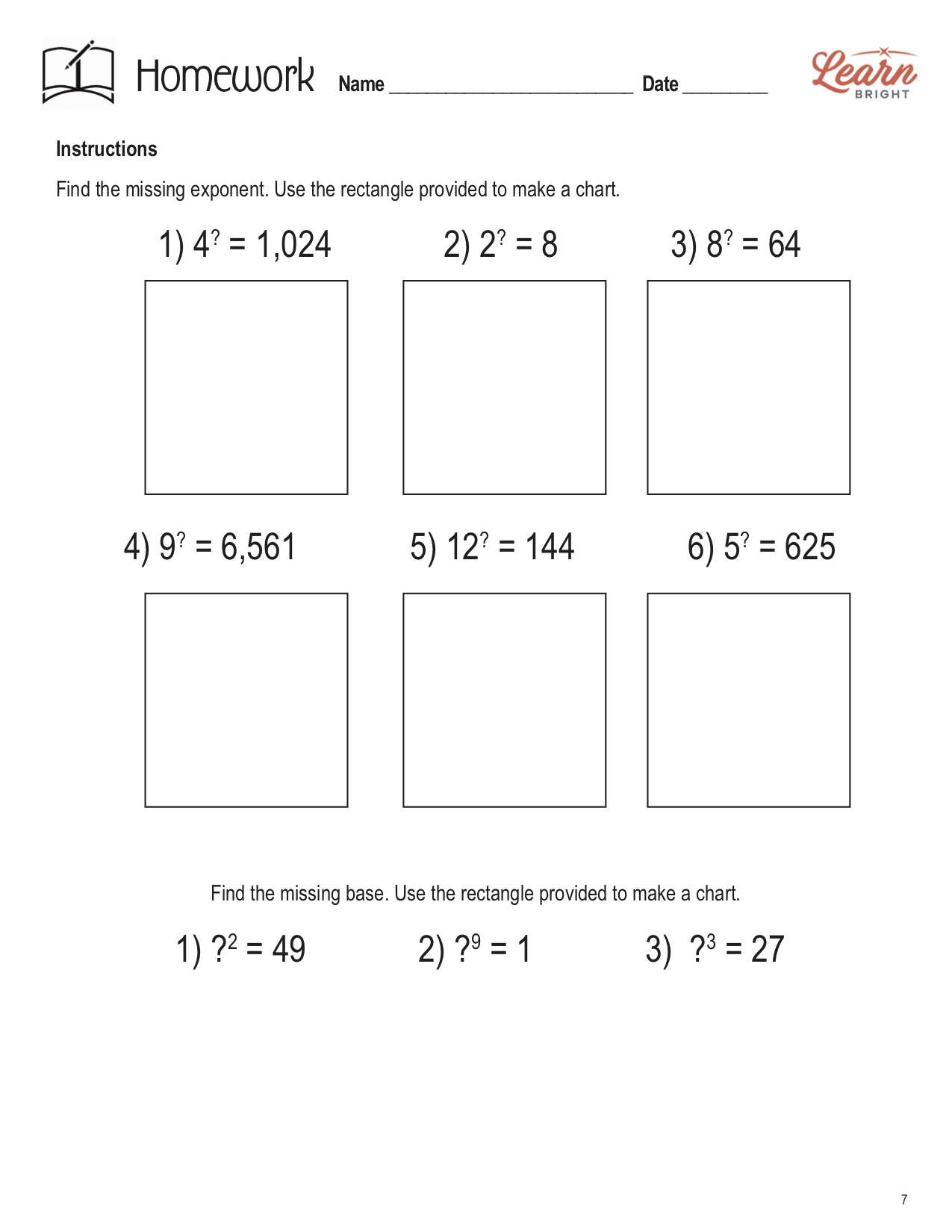Description
What our Find Missing Exponent or Base lesson plan includes
Lesson Objectives and Overview: Find Missing Exponent or Base teaches students how to find a missing exponent or base value. At the end of this lesson, students will be able to find missing values of exponents and bases in problems with numbers under 12. This lesson is for students in 5th grade and 6th grade.
Classroom Procedure
Every lesson plan provides you with a classroom procedure page that outlines a step-by-step guide to follow. You do not have to follow the guide exactly. The guide helps you organize the lesson and details when to hand out worksheets. It also lists information in the blue box that you might find useful. You will find the lesson objectives, state standards, and number of class sessions the lesson should take to complete in this area. In addition, it describes the supplies you will need as well as what and how you need to prepare beforehand.
Options for Lesson
Included with this lesson is an “Options for Lesson” section that lists a number of suggestions for activities to add to the lesson or substitutions for the ones already in the lesson. One optional addition to this lesson is to review the basic concepts of exponents and bases for students. If you have students who are comfortable working with repeated multiplication, you can use larger numbers. For an additional activity, you could have your students create posters of whole numbers and the ir list of exponents to put on the walls in order to help with finding missing exponents.
Teacher Notes
The teacher notes page includes lines that you can use to add your own notes as you’re preparing for this lesson.
FIND MISSING EXPONENT OR BASE LESSON PLAN CONTENT PAGES
Finding Missing Exponents and Bases
The Find Missing Exponent or Base lesson plan includes two content pages. Exponents are shorthand for repeated addition. For example, 6 · 6 · 6 · 6 = 6⁴. The exponent is the same as the number of times you’re multiplying the base, and the base is the number that you’re repeating. For 6⁴, 6 is the base and 4 is the exponent.
Sometimes, we encounter problems where we need to solve for the missing exponent. Let’s take a look at the example problem 16 = 4? The first step is to ask ourselves how many times we multiply 4 to get 16. We can make a chart to help us find the answer. In the chart, we’ll start with 4¹ = 4. Next, we’ll add 4² = 16. We can see from the chart that 4 multiplied 2 times is 16, so the missing exponent is 2.
Next, let’s look at an example that’s a little more complicated: 6? = 7776. First, we ask ourselves how many times we multiply 6 to get 7776. We then make a chart just like we did in the first example. In the chart, we start with 6¹ = 6 and go up from there. 6² = 36, 6³ = 216, 6⁴ = 1296, and 6⁵ = 7776. We can see from this chart that 6 multiplied 5 times is 7776, so the missing exponent is 5.
Power of 10
When we raise 10 to an exponent that’s a whole number, we first write the number 1, followed by the exponent, which tells us how many zeros to add. The lesson includes a helpful chart. It shows that 10⁰ = 1, 10¹ = 10, 10² = 100, 10³ = 1,000, 10⁴ = 10,000, 10⁵ = 100,000, 10⁶ = 1,000,000, 10⁷ = 10,000,000, and 10⁸ = 100,000,000.
Note that 10³ = 1,000. The exponent is 3 and there are 3 zeros after the number 1. This is the same format that they all follow.
Finding a Missing Base
If you need to find a missing base, you should think backwards. For the problem ?³ = 8, you should ask yourself what number multiplied 3 times equals 8. The number 2 multiplied 3 times equals 8 because 2 · 2 · 2 = 8, so the missing base is 2.
FIND MISSING EXPONENT OR BASE LESSON PLAN WORKSHEETS
The Find Missing Exponent or Base lesson plan includes three worksheets: an activity worksheet, a practice worksheet, and a homework assignment. You can refer to the guide on the classroom procedure page to determine when to hand out each worksheet.
ASCENDING ORDER ACTIVITY
For the activity, students will need to cut out all the boxes on the table. The worksheet presents a table with 10 rows of numbers that are all factors of 10. The first column has the numbers in word form. The second column shows them as numerals. The third columns displays the exponent form. However, the numbers in each column are out of order. Students must paste the three columns in ascending order. Each row must represent the same number.
FIND THE MISSING EXPONENT PRACTICE WORKSHEET
The practice worksheet requires students to find the missing exponent. There are nine questions on the worksheet. There are also empty boxes that the students can use to make a chart.
EXPONENTS AND BASES HOMEWORK ASSIGNMENT
Similar to the practice worksheet, students must find the missing exponent. There are six questions to solve. Students can use the empty boxes under each question to create a chart that will help them solve the problems. In addition, they will also find the missing base for three questions.
LABEL EACH PART QUIZ
The quiz worksheet has a few sections. The first requires students to describe a base and exponent and label the corresponding arrows. Then they will find a missing exponent. Finally, they will find a missing base.
Worksheet Answer Keys
This lesson plan includes answer keys for the practice worksheet, the homework assignment, and the quiz. If you choose to administer the lesson pages to your students via PDF, you will need to save a new file that omits these pages. Otherwise, you can simply print out the applicable pages and keep these as reference for yourself when grading assignments.









